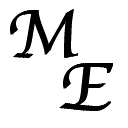
Max Euston
résumé
links
- balance v.
- 1. The act of building a productive system from elements which may dynamically resist such organization.
- 2. Evolving through changing priorities and requirements in order to maintain stability.
- 3. Fostering agility via a positive feedback environment that ensures durability.
- 2. Evolving through changing priorities and requirements in order to maintain stability.
Components of balance (positions along a single dimension)
As would be taught in a hypothetical "Balance 101" college course, these are the basic building blocks.
Concept (Education/Theory) Implementation (Experience/Practice) Learn (Listen) Teach (Talk) Lead (Pull) Follow (Push) Conformist (Perpetuate) Activist (Change) Order (Structured) Chaos (Untethered) Art (Form) Science (Function) Sociologist (People) Technologist (Things) Risk (Loss) Reward (Gain) Tactical (Transient) Strategic (Prolonged) Modesty Confidence Arrogance Ignore Influence Manipulate
Zero-dimensional balance (fixed/unyielding)
Certain traits define you as a person - these are your tenets. Whether you are an intern or a CEO, these are the attributes that support your work and life.
- Honesty
- Integrity
- Respect
A system in balance (higher dimensions)
This is the real world; life does not exist in a single dimension. Rarely, are we presented with only 2 extremes. Indeed, we find ourselves challanged to balance multiple (sometimes orthogonal; often conflicting) positions. Additionally, the components are dynamic in nature; what functions one day, will fail the next. How we endure in this environment is the true measure of our proficiency for balance and agility.